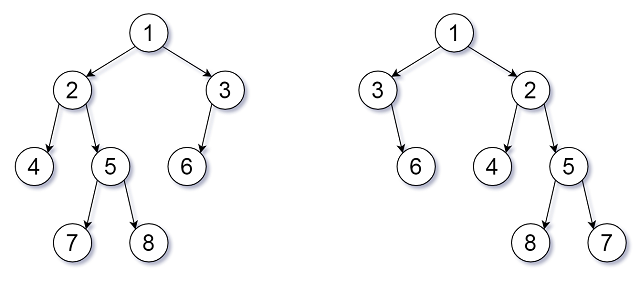Flip Equivalent Binary Trees | Coding Challenge
This is one of the popular coding challenges on the binary tree.
Let’s understand the flip operation first.
For a binary tree, we can define a flip operation as follows: choose any node, and swap the left and right child subtrees.
What are flip equivalent binary trees?
A binary tree T1 is flip equivalent to a binary tree T2 if and only if we can make T1 equal to T2 after some number of flip operations.
Problem Statement: Given the roots of two binary trees root1 and root2, return true if the two trees are flip equivalent or false otherwise.
Note: This is one of the competitive coding challenges that was asked to me in the Teachmint coding interview round.
The difficulty level is intermediate or medium.
Explanation with an example:
Consider below two binary trees.
These two binary trees are flip equivalent as we can get one binary tree from another by flipping nodes 1, 3 and 5.
Solution in Python Programming
Prerequisite:
Python Code:
# Definition for a binary tree node.
# class TreeNode:
# def __init__(self, val=0, left=None, right=None):
# self.val = val
# self.left = left
# self.right = right
class Solution:
def flipEquiv(self, root1: Optional[TreeNode], root2: Optional[TreeNode]) -> bool:
if root1 is None and root2 is None:
return True
elif root1 and root2:
if root1.val == root2.val:
return (
self.flipEquiv(root1.left, root2.left) and
self.flipEquiv(root1.right, root2.right)
) or (
self.flipEquiv(root1.left, root2.right) and
self.flipEquiv(root1.right, root2.left)
)
else:
return False
else:
return FalseHope this code is self-explanatory., If you have any doubts or have a better solution, let’s discuss it in the comment section below.
If you are preparing for a coding interview, you can solve this coding question in any programming language of your choice like C/C++, Java, Python, etc.

 Do you want me to send you programing updates for FREE?
Do you want me to send you programing updates for FREE?